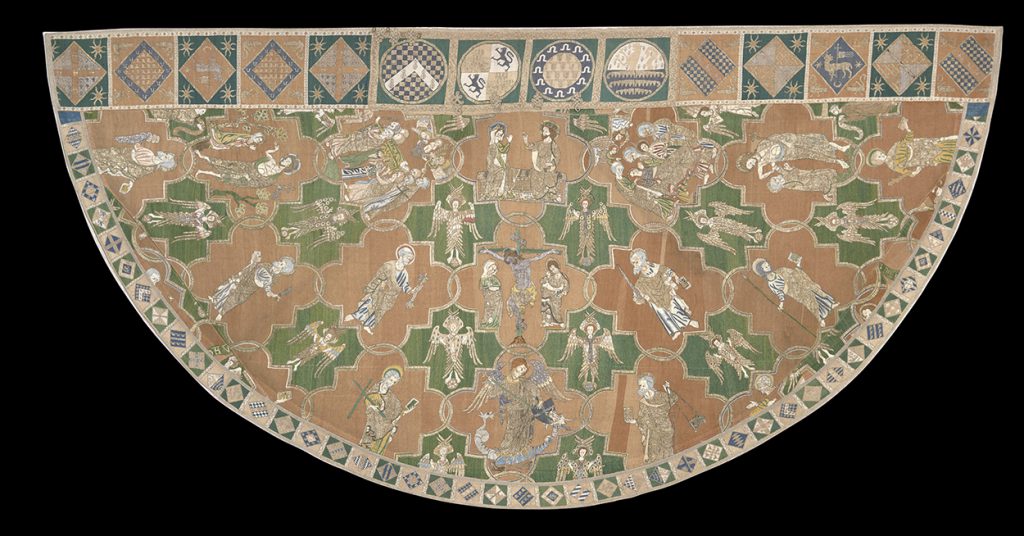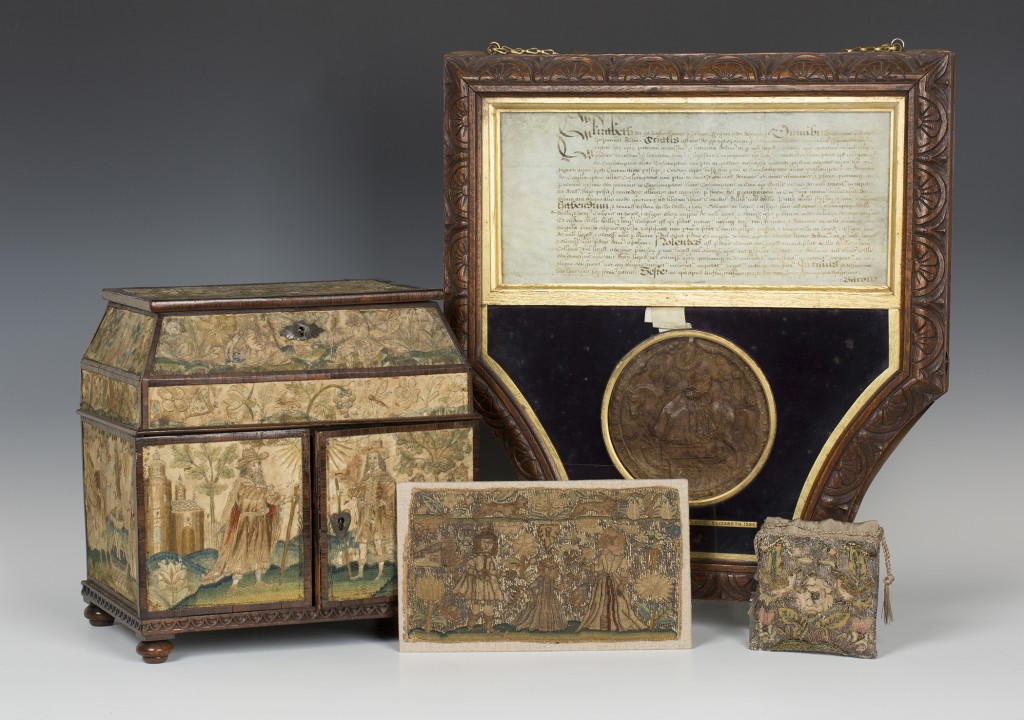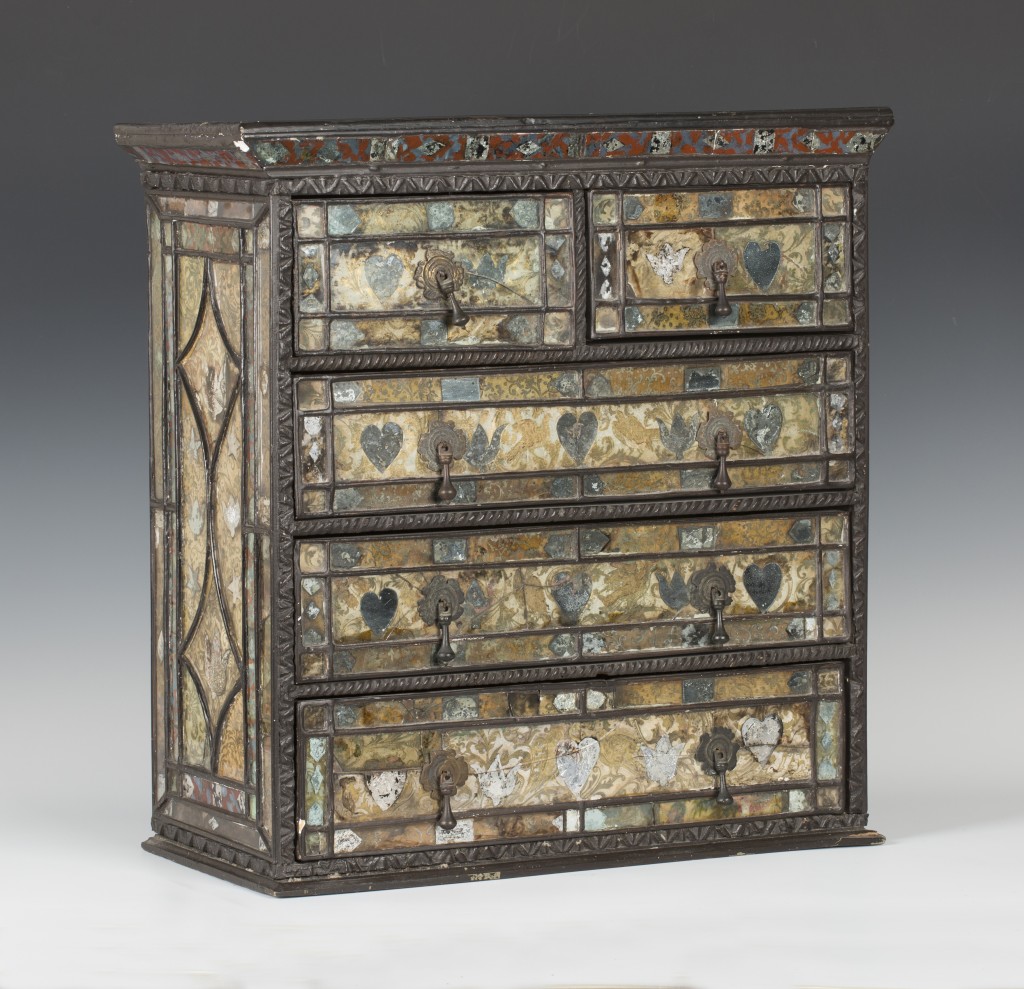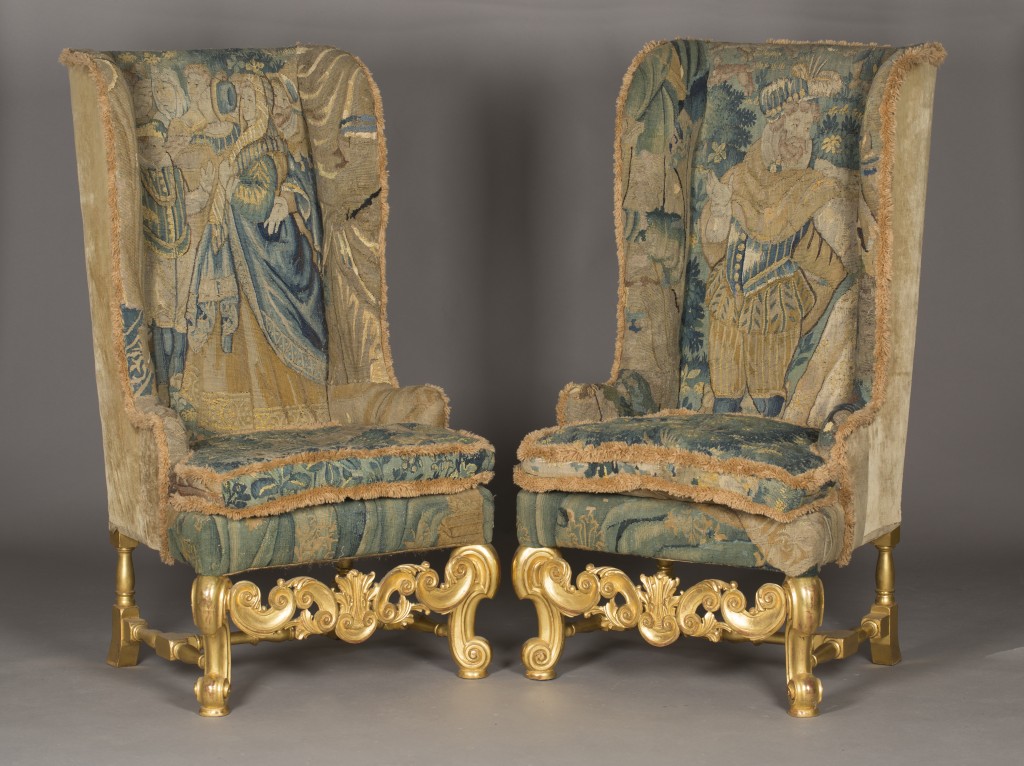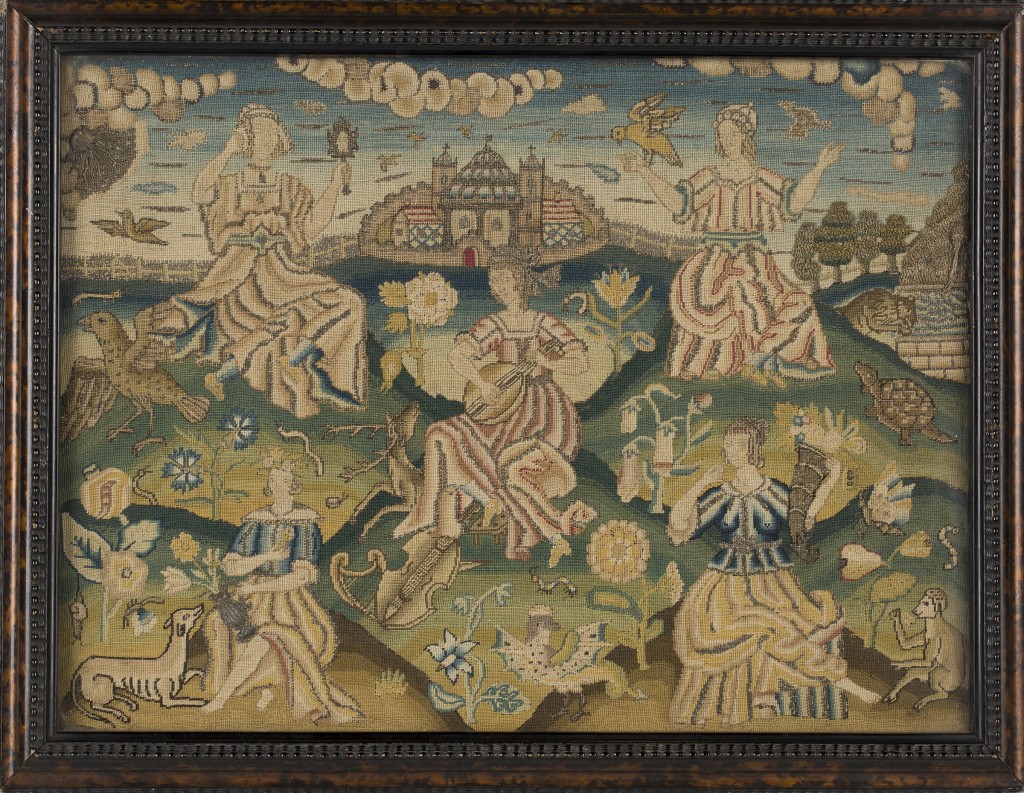The Syon Cope, circa 1310-20 © Victoria & Albert Museum‘Opus Anglicanum: Masterpieces of English Embroidery’ is a remarkable exhibition at the V&A in London which displays the heights of English Medieval and Renaissance embroidery before the Reformation.
Medieval English Christian Art included not only paintings, stained glass windows and illuminated manuscripts but also exquisitely produced textiles which we term today as Opus Anglicanum, Latin for English work.
At the heart of the exhibition are an exemplary display of Gothic church vestments and altar fronts.
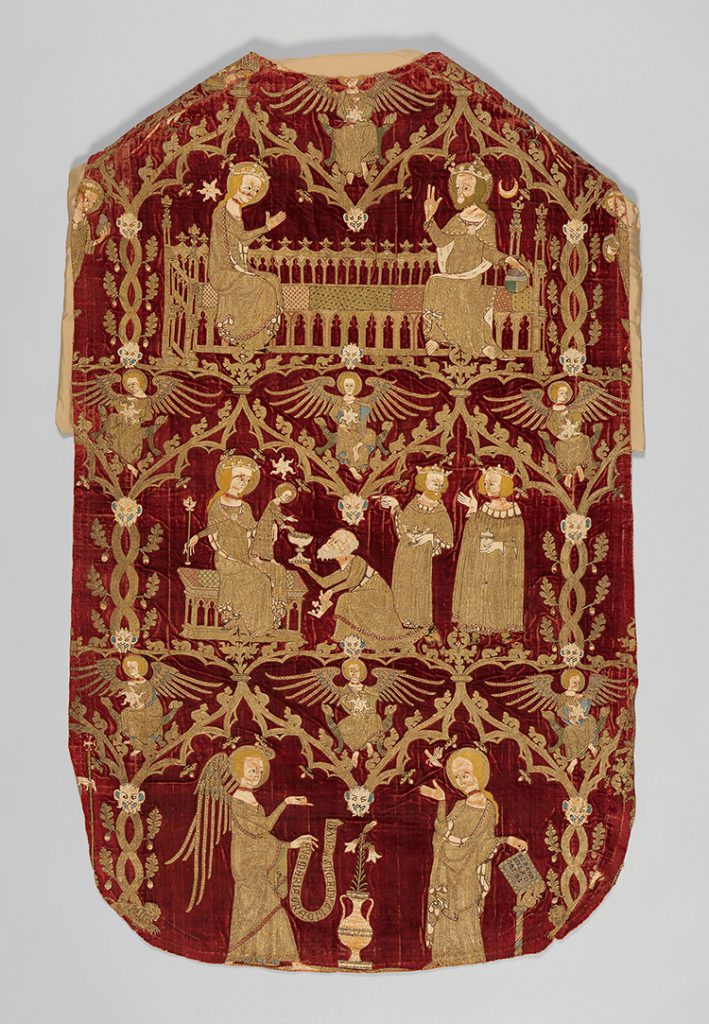
The story told by the scenes on the Chichester Constable Chasuable are pertinent to the Christmas season. The Virgin Mary is depicted crowned and with sceptre as well as in a scene from the Annunciation where she is told by the Angel Gabriel that she will bear a child born of the Holy Spirit. Framed within the tiers of Gothic arches the story of the Epiphany is told where Jesus Christ is revealed to the Gentiles through the Magi, the three Wise Men, who have followed the star to Bethlehem where they find him in a stable. In this scene they kneel before Christ as they offer their gifts of Gold, Frankincense and Myrrh whilst above them the star and angels can be seen. Chasubles are still worn by Priests today when they celebrate the Eucharist.
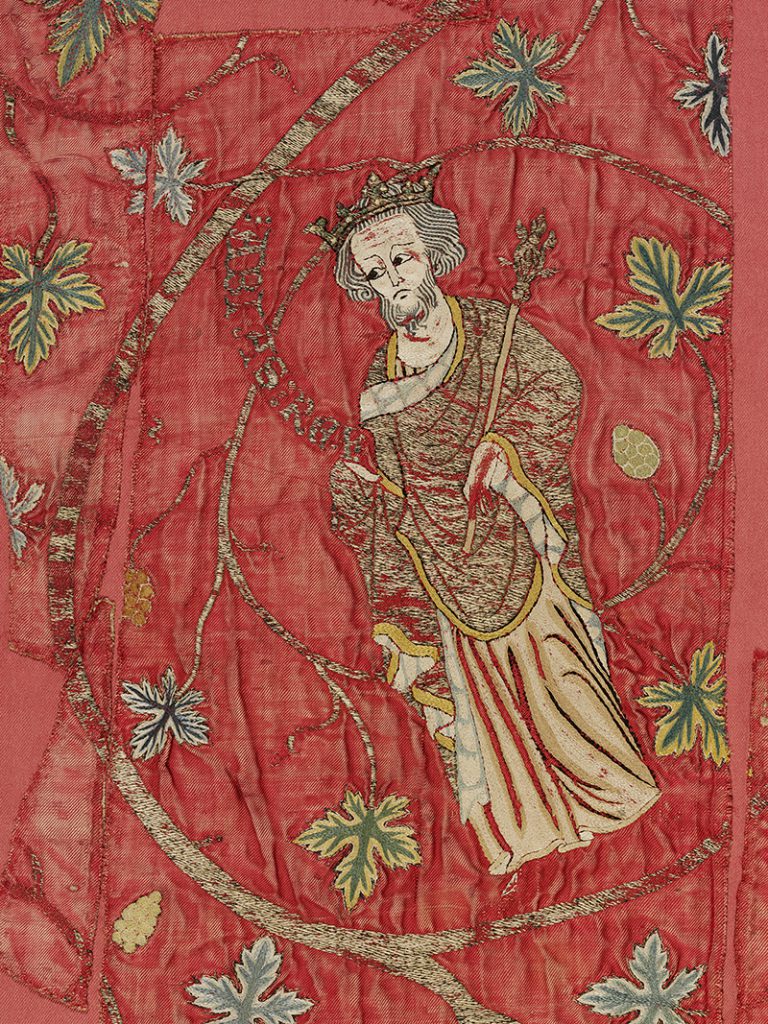
Copes are worn by Bishops and Priests for processions. Two Medieval copes can be seen here. The Jesse Cope unites Jesus with the line of David and the design incorporates statuesque angels and saints as can be seen in the detail illustrated here. The embroidery on The Syon Cope is worked in silver-gilt and silver thread in split, cross and plait stitches. Once again scenes from the life of Christ and the Virgin Mary are told within borders decorated with winged seraphs and angels bearing crowns.
These early 14th century textile vestments allow us to glimpse the beauty of the arts in pre-Reformation England. Indeed, the quality of English needlework was highly prized throughout Christendom. It is surprising to observe so many rare masterpieces of early English needlework and to reflect upon how many examples survived the turbulent Tudor Reformation in this country.
Epiphany marks twelfth night, the end of the Christmas season. The New Year and Epiphany will be celebrated in churches across Sussex in the coming Sundays. Priests will be robed in Chasubles, as they have been since the earliest times, as they celebrate the Eucharist marking these important stories which are common to us all.
‘Opus Anglicanum: Masterpieces of English Embroidery’ runs at the V&A in London until Sunday 5th February 2017. For more information go to www.vam.ac.uk.
The V&A is to be congratulated on this jewel-like exhibition and it should definitely be one of your New Year resolutions to see it.
By Rupert Toovey, a senior director of Toovey’s, the leading fine art auction house in West Sussex, based on the A24 at Washington. Originally published in the West Sussex Gazette.
